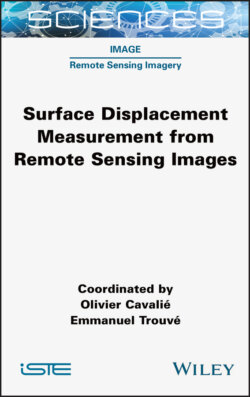Читать книгу Surface Displacement Measurement from Remote Sensing Images - Olivier Cavalie - Страница 2
Table of Contents
Оглавление1 Cover
2 Title Page
3 Copyright
4 Preface
5 PART 1: Theory, Principles and Methodology
6 1 Relevant Past, On-going and Future Space Missions 1.1. Some key parameters for space missions 1.2. Past and on-going SAR missions 1.3. Future SAR missions 1.4. Optical imaging missions 1.5. Conclusion 1.6. Acknowledgments 1.7. References
7 2 Image Matching and Optical Sensors 2.1. Introduction, definition and applications 2.2. Template matching 2.3. Handling “large” deformations 2.4. Discrete nature of the image and sub-pixel matching 2.5. Optical imaging sensors 2.6. Acknowledgments 2.7. References
8 3 SAR Offset Tracking 3.1. Basics of SAR imaging 3.2. SAR offset tracking 3.3. Acknowledgments 3.4. References
9 4 SAR Interferometry: Principles and Processing 4.1. Introduction 4.2. Principle and limits of SAR interferometry 4.3. Atmospheric corrections 4.4. InSAR processing chains 4.5. Conclusion 4.6. Acknowledgments 4.7. References
10 5 Advanced Methods for Time-series InSAR 5.1. Introduction 5.2. Background of time-series InSAR analysis 5.3. A review 5.4. The SBAS technique 5.5. The PSDS technique 5.6. Acknowledgments 5.7. References
11 6 The Interferometric Phase: Unwrapping and Closure Phase 6.1. Introduction 6.2. Phase unwrapping algorithms and limitation of phase unwrapping errors 6.3. The (re)discovery of closure phases and their implications for SAR interferometry 6.4. Acknowledgments 6.5. References
12 PART 2: Applications for Surface Displacements
13 7 Remote Sensing of the Earthquake Deformation Cycle 7.1. Introduction 7.2. What have we learned about faults from nearly three decades of tectonic InSAR? 7.3. Investigating earthquake surface ruptures with optical image correlation 7.4. Conclusion 7.5. Acknowledgments 7.6. References
14 8 Volcanology: The Crucial Contribution of Surface Displacement Measurements from Space for Understanding and Monitoring Volcanoes 8.1. Introduction 8.2. Origin of surface displacement and topographic changes in a volcano 8.3. Techniques used to measure displacements and topographic changes in volcanoes 8.4. Main limitations of measurements obtained by remote sensing 8.5. Main contributions of spatial geodesy for monitoring and studying volcanoes 8.6. Recent progress 8.7. Volcanic crisis management: the contribution of displacement measurements obtained using spatial imagery 8.8. Conclusion 8.9. Acknowledgments 8.10. References
15 9 Anthropogenic Activity: Monitoring Surface-Motion Consequences of Human Activities with Spaceborne InSAR 9.1. Introduction 9.2. Characteristics of subsidence/uplift phenomena associated with human activity 9.3. Application examples: urban underground activities 9.4. Applications in mineral resources extractive activities 9.5. Conclusion 9.6. Acknowledgments 9.7. References
16 10 Measuring Kinematics of Slow-Moving Landslides from Satellite Images 10.1. Introduction 10.2. Image correlation applied to satellite optical images 10.3. Offset tracking of SAR images applied to landslides 10.4. InSAR for landslide studies 10.5. Conclusion 10.6. References
17 11 Remote Sensing of Glacier Motion 11.1. Introduction 11.2. What is glacier motion? 11.3. Measuring glacier displacement from satellite data 11.4. What can we learn from glacier displacement? 11.5. Perspectives and future directions 11.6. Acknowledgments 11.7. References
18 12 New Applications of Spaceborne Optical Image Cross-Correlation: Digital Elevation Models of Volcanic Clouds and Shallow Bathymetry from Space 12.1. Introduction 12.2. Digital elevation models of volcanic ash clouds 12.3. Shallow bathymetry: measuring wave characteristics from space 12.4. Concluding remarks 12.5. Acknowledgments 12.6. References
19 List of Authors
20 Index
21 End User License Agreement
